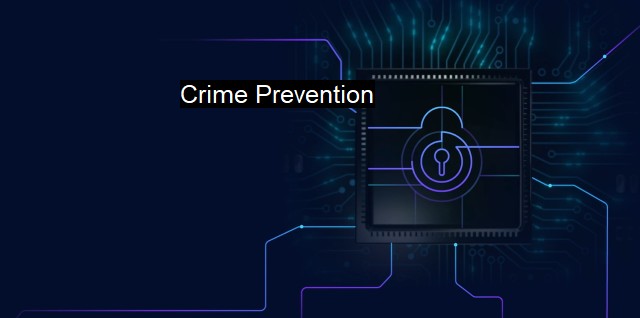What is Crime Prevention?
Ensuring Complete Cybersecurity Protection: The Growing Role of Antivirus Software and Crime Prevention Strategies in the Digital Age
Crime prevention refers to the assortment of steps and tactics employed to deter, obstruct, and minimize criminal acts or behavior, which relates to activities generated to address cybercrime. Cybercrime entails illegal activities executed in digital environments that involve crimes ranging from malware and phishing attempts that breach a computer system’s defenses to stealing sensitive information and committing digital fraud. Thus, crime prevention in the context of cybersecurity encompasses a robust repertoire of counteracting software and protocols intrinsically designed to prevent cybercriminals from invading systems or networks, causing disruption, and perpetuating theft.There are varied facets to cybersecurity crime prevention. One of the quintessential prevention elements is an antivirus program, typically a software package built to detect, repulse, and eradicate malicious software, colloquially known as malware. This malware incarnates as viruses, trojans, rootkits, worms, to name a few, and the antivirus software stands as the first line of defense against such malicious applications. An antivirus software not only protects any system from being compromised but also accrues and constructs a protective shield around the data against theft or sabotage.
Another constitutive part of crime prevention in cybersecurity front is configuring firewalls - hardware or software defending a controlled space of trusted devices from suspicious outsiders. A firewall essentially restricts the realm of potential contacts between computing systems on both sides by filtering ingress communication, thus preventing unauthorized access to protected resources. In doing so, it eliminates the possibility of cybercriminals infiltrating a system and spreading potentially dangerous malware or stealing valuable data.
Encryption plays an essential role in this context - restricting unauthorized access to sensitive data by converting it into encoded or unreadable information, only decipherable with appropriate encryption keys. So, even if cybercriminals manage to usurp the data during transmission or from the system, they are unable to misuse it due to encryption.
In the present day, another thriving platform for cybersecurity crime prevention is artificial intelligence (AI). AI offers unparallel superiority in combating cybercrime by shrewdly recognizing patterns, predicting possible threats, and taking preemptive actions. It helps in taking cybersecurity to greater heights by providing 24/7 surveillance against cyber threats, pinpointing possible breaches before they transpire, and warding off complex attacks that manual human intervention might lose out on.
Yet another tool under the crime prevention umbrella involves reactive measures in the form of Incident Response (IR) systems. In case infiltrators breach preventative systems and execute an attack, the IR teams work promptly to minimize damage, neutralize effects of the cyberattack, restore systems to their full capacity and dodge identical attacks in the future.
Summarily, cybersecurity crime prevention revolves around the pillars of recognizing potential cyber threats, defending systems against these threats, efficiently reacting during the unfortunate event of infiltration, and continually refining and fortifying this process loop with reconciliation, patches, and updates.
Yet, with all its technological promise and prowess, it is crucial to note that cybercrime prevention is incomplete without fostering user awareness, maintaining effective organizational policies, remaining vigilant about emerging technology, and regulatory compliances to tackle the challenges of an evolving cybercrime ecosystem. Therefore, cybersecurity crime prevention resides fundamentally in understanding that it is more than about technology, and represents an ongoing, strategic process imperative to securing digital realms and empowering individuals and organizations alike to thrive in an interconnected world safely.

Crime Prevention FAQs
What is crime prevention and how does it relate to cybersecurity?
Crime prevention is the anticipation, recognition, and appraisal of crime risks, along with the initiation of some action to eliminate or reduce the risks. In cybersecurity, crime prevention involves taking proactive measures to protect computer systems, networks, and data from unauthorized access, theft, or damage.What are some effective crime prevention strategies for cybersecurity?
Some effective crime prevention strategies for cybersecurity include using antivirus software, implementing strong passwords and multi-factor authentication, regularly updating software and operating systems, limiting user privileges, and providing employee training on cybersecurity best practices.What role do antivirus programs play in crime prevention?
Antivirus programs play a critical role in crime prevention by detecting and removing malicious software from computer systems. They scan files, emails, and other digital communications for signs of viruses, malware, or other threats, preventing them from causing damage to the system or stealing sensitive information.Why is employee training important for cybersecurity crime prevention?
Employee training is essential for cybersecurity crime prevention because employees are often the weakest link in the security chain. They may inadvertently click on phishing emails, download malware-infected files, or use weak passwords, leaving the company's systems vulnerable to attack. Providing regular training on cybersecurity best practices helps employees recognize and avoid these risks, reducing the likelihood of a successful cyberattack.| | A | | | B | | | C | | | D | | | E | | | F | | | G | | | H | | | I | | | J | | | K | | | L | | | M | |
| | N | | | O | | | P | | | Q | | | R | | | S | | | T | | | U | | | V | | | W | | | X | | | Y | | | Z | |
| | 1 | | | 2 | | | 3 | | | 4 | | | 7 | | | 8 | | |||||||